Expert Guides
How to Become a Sound Designer

If you’re someone who loves music and creativity, then becoming a sound designer may be the perfect career choice for you. Sound designers are responsible for creating and editing sound effects and music for films, television shows, video games, and other multimedia productions. They must have a strong understanding of audio engineering principles as well as a creative flair for music composition and sound design.
How to Become a Sound Designer
How to Become a Sound Designer? There are several ways to become a sound designer. One popular route is to earn an audio engineering degree from an accredited college or university. Alternatively, many sound designers have backgrounds in music composition or filmmaking, so they may be able to find work in this field with little or no formal training. However, having a degree in audio engineering will give you a strong foundation for this career and can provide you with an edge compared to other applicants.
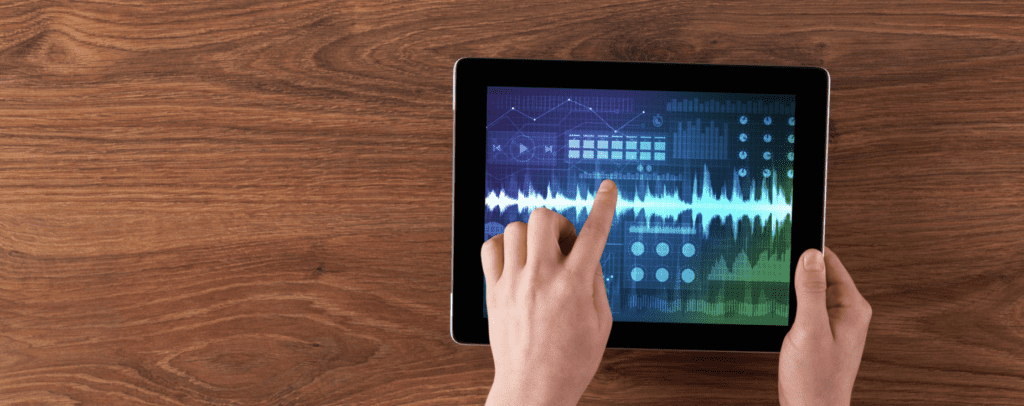
Sound Designers Work Areas
Sound designers are needed in most areas of the entertainment industry, including film studios, radio stations, recording studios, advertising agencies, video game companies, computer software firms, multimedia developers, music producers, and performance venues.
This profession offers many opportunities for advancement as well as job satisfaction. If you enjoy listening to music, working with audio equipment, and pushing the creative envelope, then becoming a sound designer may be right for you.
One of the main challenges people face when trying to become a sound designer is that they don’t know where to start. There are many different colleges and universities that offer audio engineering degrees, but not all of them are created equal. It’s important to do your research and find a program that will provide you with the skills and knowledge you need to succeed in this field.
Another challenge people face is getting their work noticed. It can be difficult to break into the entertainment industry, especially if you don’t have any formal training or experience. However, it is definitely possible to make a name for yourself in this field with hard work and perseverance.
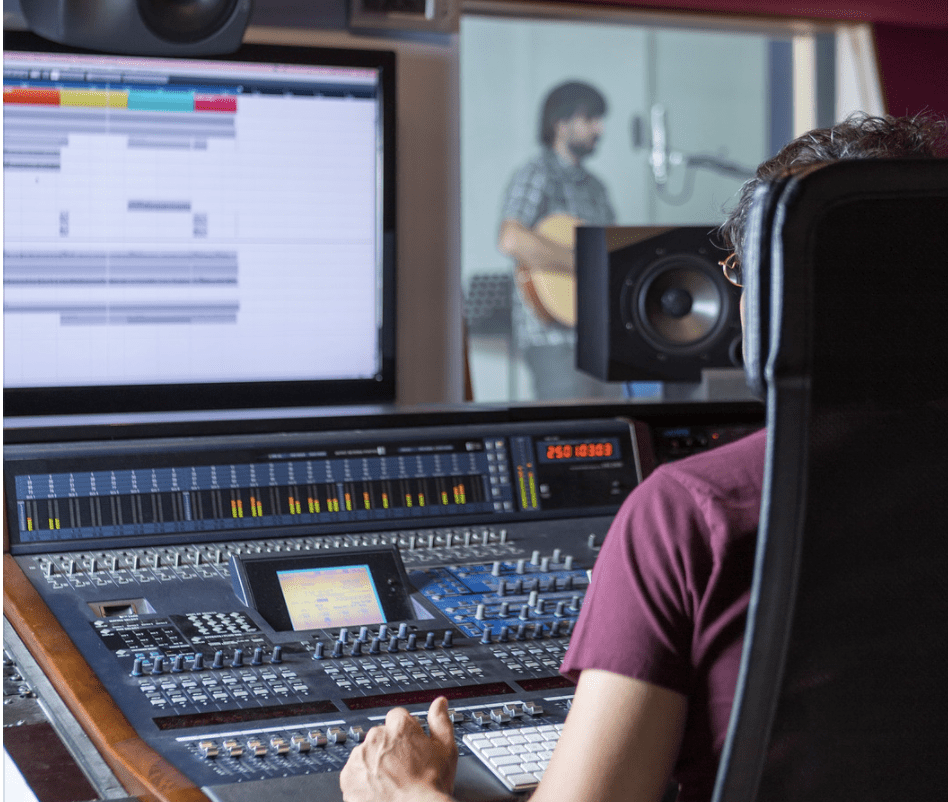
Deadline After Deadline
Sound designers also often have to deal with tight deadlines and last-minute changes. If you work in this profession, then you’ll have to learn how to adapt quickly and handle a wide range of tasks. You will need strong communication skills as well since sound designers usually work with other people on a daily basis.
In most cases, becoming a successful sound designer requires years of hard work and dedication. However, if you have the right blend of skills, creativity, and motivation then it is definitely possible.
So if you think that sound design might be the perfect career choice for you, do some research at colleges and universities near you to see what audio engineering degree programs they offer. Also take some time to explore your options so that you can find one that matches your needs. With a little bit of luck and enough determination, soon you’ll be designing sounds for hit movies, TV shows, video games, or multimedia projects.
Recruiters are often looking for candidates who are strong in the following areas:
- Communication skills – Must be able to work well with others and communicate effectively through writing and speaking
- Hands-on experience – Must have previous experience with audio engineering equipment and software programs
- Organizational skills – Must be able to complete tasks within set timeframes without forgetting important details
- Problem-solving skills – Must have the ability to identify problems and provide quick solutions before they become serious issues
A bachelor’s degree is usually required for this profession. To increase your chances of success, search for colleges that offer an audio engineering program that will give you a solid foundation for this career.
You can also gain valuable experience by volunteering or interning at recording studios, movie studios, concert venues, etc. The more hands-on experience you have working with sound editing software and other audio equipment, the better off you will be once you graduate.
Is a Sound Designer Role My Perfect Job?
You may be wondering if becoming a sound designer is the right career choice for you. Here are some reasons why you might want to consider this profession:
- You have a passion for music and sound.
- You want to use your creativity to help create sounds that evoke emotion in people.
- You want to work in a creative and collaborative environment.
- You enjoy working with technology and are interested in learning about new audio software and hardware.
- You are willing to put in the hard work it takes to break into this competitive field.
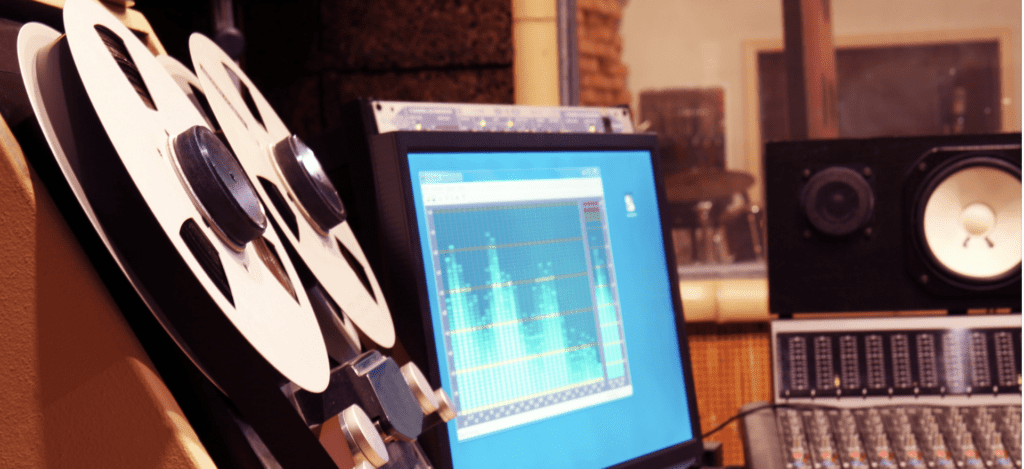
What Does a Sound Designer Do?
A sound designer’s main responsibility is creating original music compositions along with matching sound effects for multimedia productions including movies, television shows, video games, and advertisements.
They also edit or alter existing sound bites to make them more appropriate for a specific project, such as video games and other interactive productions. Generally, this process includes adding audio effects like echoes and filters along with digital editing tools to enhance the audio clip’s overall quality.
They must also oversee all audio elements associated with a production; these elements may include dialogue, sound effects, music scores, voiceovers, and environmental sounds. A sound designer works with a team of people to get the best possible results for each project including producers, musicians, actors, technical directors, and film editors.
Skills Needed to Be a Sound Designer
To become a successful sound designer, you will need a strong technical understanding of audio equipment and engineering. You’ll also need to have a creative flair for composing both music and sound effects, as well as a thorough understanding of the different types of sounds used in multimedia productions.
In some cases, experts recommend that individuals interested in this career should first work as an intern with a sound design firm or production studio to gain hands-on experience.
Audio Engineering Knowledge
It is important for sound designers to understand how audio recording equipment works. This includes microphones, mixers, amplifiers, and sound cards that are used for capturing different sounds.
As the technology used in this field continues to rapidly evolve, it is essential that sound designers keep up with all new advancements in digital audio tools and software programs.
Creativity
Sound designers must be able creative individuals who can think outside of the box when it comes to creating original music compositions and sound effects. They should also have a strong understanding of pace, tone, timing, and melody so their work meshes well with other multimedia elements.
Sound Effect Editing Skills
Sound designers will need to have strong editing skills so they can modify pre-existing sound clips for use in their projects. They should be familiar with the different types of sounds used in multimedia, including dialogue, music scores, voiceovers, and environmental sounds.
Getting Started as a Sound Designer
This career path requires extensive education and training, usually at the bachelor’s degree level or higher. Individuals can attend college to earn an associate or bachelor’s degree in music composition with a concentration in sound design. Some schools also offer degrees in audio production that include courses on mixing music and creating sound effects for multimedia projects.
Work Experience (Internships and Apprenticeships)
Individuals interested in becoming sound designers should consider looking for internships or apprenticeship opportunities to gain hands-on experience with this profession. These types of positions are common within the entertainment industry, especially with recording studios, film companies, post-production houses, advertising agencies, game developers, video game publishers, radio stations, and television production firms.
Concerns and Drawbacks While this career can be rewarding in many ways, it also comes with several challenges that you must prepare for ahead of time including long periods of working alone without much social interaction; having to deal with tight deadlines; meeting high standards
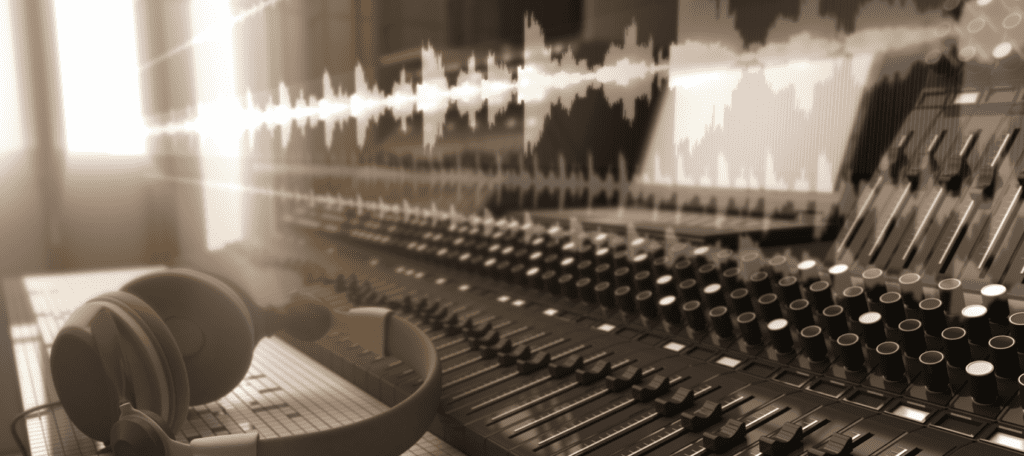
How to Become a Sound Designer
A bachelor’s degree in audio engineering is the most common educational path to becoming a sound designer, but you can also find work within this field without formal training. Generally, these professionals have backgrounds in either music composition or filmmaking and continue their education by taking classes related to sound design and digital editing.
Although many successful sound designers began their careers as musicians or filmmakers, this isn’t always the case; some people just develop an affinity for sound equipment and enjoy experimenting with different types of sounds and compositions later on in life.
You may want to start by contacting local recording studios, broadcast companies, multimedia development firms, film studios, video game companies, and ad agencies to find out which firms are currently hiring. You may also submit your resume online to several of these organizations at once via an online job board like Monster or Careerbuilder.
Once you land a job in this field, it’s important to continually hone your skills through ongoing training and education so you can stay ahead of the competition within this highly competitive industry.
Salary Outlook for Sound Designers
The U.S. Bureau of Labor Statistics does not have salary information specifically for sound designers, but according to its Occupational Outlook Handbook, audio equipment technicians (which includes sound designers) earned a median wage of $28,110 per year as of May 2012. The highest 10 percent in this profession earned more than $65,590 annually.
Pros and Cons of Being a Sound Designer
Because becoming a successful sound designer takes hard work and dedication, the profession is not always easy to break into. A strong passion for music along with multimedia production techniques are also necessary to excel in this career field, which of course isn’t for everyone.
However, there are many pros that make choosing this profession worth it including self-employment opportunities, the ability to try different types of sounds during each project, working with some very creative people on various multimedia productions, and doing something you love every day.
On the other hand, you’ll need to make sacrifices like working long hours or weekends when needed for projects due to tight deadlines. Your work is also not always visible to others, so credit for your contributions may go unrecognized.
If you’re interested in this type of work, the pros certainly outweigh the cons. For more information on breaking into this career field or how to become a successful sound designer through ongoing training and advancement, please check out some of the other articles on this website covering these topics.

Conclusion
Becoming a sound designer can be an interesting and rewarding career choice. It can also be quite challenging to break into this field, but it is definitely possible with the right skills and determination. In this article, we will explore what a sound designer does, the skills needed to be successful in this profession, and how to go about becoming one yourself. We will also take a look at the job outlook for sound designers as well as their expected salary range. Finally, we will discuss some of the pros and cons of this career choice.
How to Become a Sound Designer FAQ
What Type of Degree Will I Need to Become a Sound Designer?
The short answer is you won’t necessarily need a degree to become a professional sound designer. However, it certainly helps if you at least have some experience in music or multimedia production.
While most companies are looking for individuals with degrees, many projects can be handled by freelancers who are good at what they do and may not have the time or resources to find someone else.
However, continuing your education through courses related specifically to sound design will definitely help you stay ahead of the competition within this highly competitive industry. You may also want to consider taking courses that teach digital editing or multimedia programing skills so you can offer more services to clients in the future.
Who Are Some of the Most Successful Sound Designers?
Two very successful sound designers are Gary Rydstrom and Ben Burtt.
Gary Rydstrom is a seven-time Oscar winner who mainly specializes in sound design for films. He has worked on projects like “Terminator 2: Judgement Day,” “Saving Private Ryan,” and “Jurassic Park.”
Ben Burtt is also an Oscar winning designer who has done work on movies like Star Wars, E.T., Indiana Jones, and WALL-E. He was even nominated for an Academy Award in 2012 for his sound design work on “Star Wars: The Phantom Menace.”
What Will My Workday Be Like as a Sound Designer?
The average workday for a sound designer varies depending on the employer and the current project at hand.
The nature of freelance work can cause long hours and tight deadlines as well as unpredictable schedules since you need to make yourself available to meet with clients or complete assignments when needed. If you decide to pursue employment with one company, your schedule will be more consistent but may still require shifts outside of regular business hours.
Sound designers spend their days working with audio equipment such as microphones and software like Pro Tools, Adobe Audition, Logic Audio, Reaper, or Sound Forge. They also spend time networking with other professionals in this field along with recording sound effects from various sources.
What Are Some Helpful Skills for a Sound Designer?
To become a successful sound designer, it’s important to have an open mind and the ability to take direction. You also need to be creative, versatile, driven, and organized since you’re responsible for coming up with ideas for projects as well as managing each step of the process until they are completed.
With computer programs becoming more advanced every year, learning how to use digital editing software is extremely beneficial in this profession. Knowledge of music theory is also helpful if you plan on creating your own sounds or composing melodies. Knowing how to play an instrument can be useful if you plan on doing field recordings yourself or are interested in designing sound effects for musical projects. Learning about acoustics is another plus since there are many factors that can affect sound quality.
How Will a Sound Designer’s Career Progress?
Most sound designers begin their careers by taking on jobs that require basic skills and work their way up from there as they gain experience.
Once you have a few years under your belt, you may want to spend some time working on smaller projects for indie films or finishing school with an emphasis in sound design or multimedia production which can make you more marketable when looking for full-time employment. Over the course of your career, it will be helpful to participate in as many networking events as possible since these can lead to potential job opportunities.
Where Are Some Places I Can Find Jobs as a Sound Designer?
Most positions are available through connections made within the industry. However, there are websites that have job listings for this profession. These include:
A few examples of the types of companies that hire sound designers are recording studios, advertising firms, multimedia production houses, video game companies (although many more now hire game composers), and post-production houses.
AI Generator
Ownership Battle in the Age of AI-Generated Music

The emergence of artificial intelligence in music production has ushered in a new era of innovation. However, it has also sparked debates over ownership rights. As AI-generated music becomes more common, concerns about who owns these creations are brought to light.
This article delves into the legal battles and ethical debates surrounding AI-generated music ownership.
Defining Ownership in AI-Generated Music
In a traditional sense, determining the owner of the copyrighted material is straightforward. However, with AI-generated content, the situation becomes more complex.

Is the creator of the algorithm that generated the music the owner? Is it the person who trained the algorithm? Is it possible to claim ownership over something not directly created by human hands?
Grimes’s Controversial Tweet: A Case Study
Grimes’s tweet about allowing her voice to be used in AI-generated music exemplifies this issue. She said she would sell her digital soul for $10 million, granting an AI company permission to use her voice as they wished. The tweet sparked controversy, with some seeing it as selling out and others viewing it as a clever move.
Legal Battles and Intellectual Property
Ownership rights of AI-generated music are just starting to be tested in courts. In 2018, Sony won a landmark case against musician Kevin Parks Jr., who claimed he had created songs using Sony’s software without permission or compensation. The court ruled in favor of Sony since their software was used in creating Parks’ songs.
This ruling raises questions about whether algorithms can be considered intellectual property or merely tools used by creators. If algorithms are deemed intellectual property, there may be issues surrounding their licensing for commercial use.
Record Labels and the Changing Dynamics
As record labels adapt to the rise of AI-generated content, they, too, must confront ownership rights issues. Record labels have historically owned much of the copyright associated with artists’ work; however, this dynamic may change as more artists turn to AI-generated music.
If an artist uses an AI program to create a piece of music, who owns the rights to that work? Is it the artist or the creator of the algorithm that generated it?
Implications for Streaming Platforms
The rise of AI-generated music also impacts streaming platforms like Spotify and Apple Music. These platforms have already faced criticism for their low royalty payouts to artists, and if AI-generated content becomes more prevalent, this issue may only worsen.
Additionally, as record labels lose some control over ownership rights, they may push for higher payouts from these streaming services.
Public Domain and AI-Generated Music
The implications of AI-generated music on the public domain are worth considering. AI algorithms often use existing music data to create new compositions, raising questions about whether AI-generated music should be considered part of the public domain or if new legal frameworks are needed to protect both original creators and AI developers.
When an AI algorithm generates music based on existing works, it can be difficult to determine if the resulting composition is a derivative work or an entirely new creation. If AI-generated music is considered part of the public domain, it may limit the rights of original creators whose work was used as input. On the other hand, if AI-generated music is granted copyright protection, it could potentially stifle creativity and limit access to cultural works.
Moral Rights and AI-Generated Music
The concept of moral rights is particularly relevant in the context of AI-generated music. Moral rights protect an artist’s right to be recognized as the creator of their work and to preserve the integrity of their creations. It is important to discuss how moral rights might apply to AI-generated music and the potential challenges that may arise.
In the case of AI-generated music, it can be difficult to determine who should be recognized as the creator: the original artist whose work was used as input, the developer of the AI algorithm, or both. Additionally, AI-generated music may inadvertently modify or distort the original work, potentially violating the moral rights of the original creator.
AI-Generated Music and Fair Use
The concept of fair use plays a significant role in the context of AI-generated music. Fair use is a legal doctrine that allows for the limited use of copyrighted material without requiring permission from the rights holder. It is important to discuss whether AI-generated music, which often relies on existing music data, can be considered fair use and the potential legal implications that may arise.
When AI algorithms use existing music as input, they may be seen as transformative, creating new works based on the original material. However, the extent to which AI-generated music can be considered fair use is not yet clearly defined in the law, and it may vary depending on the degree of transformation and the potential market impact on the original work.
In conclusion, addressing the additional topics of public domain, moral rights, and fair use in AI-generated music contributes to a more comprehensive understanding of the various legal and ethical issues surrounding this emerging technology. As AI-generated music becomes more prevalent, it is crucial for legal frameworks and industry practices to adapt in order to balance the rights of creators, AI developers, and the public interest.
The Future of Ownership Rights
In conclusion, ownership rights in the era of AI-generated music are uncertain at best. As more legal battles arise and ethical debates continue, it is clear that traditional copyright laws will need to adapt to keep up with technological advancements.
The struggle for ownership is just beginning, but it will undoubtedly shape the future of the music industry for years to come.
AI Generator
The Influence of Artificial Intelligence on The Creation of Music

A New Era of Creativity and Expression
Music has always been a strong reflection of human innovation and emotions. Throughout history, our voices and musical instruments have played a crucial role in expressing our feelings, telling stories, and building relationships with others. As technology has advanced, our ways of creating music have also progressed.
Modern musicians now have access to various tools, enabling them to manipulate sound in unimaginable ways. Synthesizers can emulate virtually any sound, while digital audio workstations facilitate precise editing and manipulation of recorded tracks. And now, the rise of artificial intelligence (AI) offers musicians even more possibilities for music creation.
AI Applications in the Music Industry
AI is being utilized in multiple ways within the music industry. One popular application is generating original compositions based on existing musical data sets. By analyzing millions of songs across genres and periods, AI algorithms can identify patterns and generate new melodies or chord progressions that fit within those patterns.
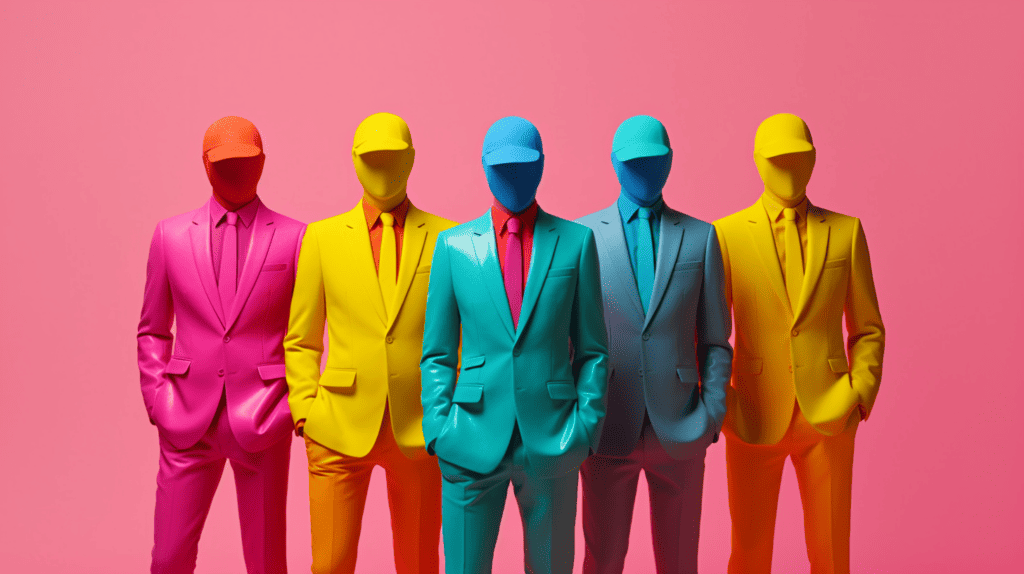
Another application involves using AI to enhance existing performances or recordings. For instance, software like iZotope’s RX can isolate individual instrumental tracks from a mix and remove unwanted noise or artifacts without impacting the rest of the recording.
Unintended Consequences and Concerns
However, as with any emerging technology, unintended consequences arise from using AI in music creation. One worry is that AI-generated music might lack the emotional depth and nuance that human performance offers. While an algorithm can create technically proficient melodies or chord progressions, it may not capture the same sense of emotion or passion found in a live performance.
Another concern revolves around ownership rights of AI-generated music. If an algorithm generates an original composition based on data sets owned by multiple parties (such as record labels or streaming platforms), who has the rights to that composition? This question has already sparked legal battles between artists collaborating with AI algorithms and those claiming ownership over their contributions.
Harnessing AI for Collaboration and Growth
Many musicians and industry professionals see AI as an opportunity for collaboration and growth. AI can be a creative assistant, inspiring artists, helping them overcome writer’s block, or even offering suggestions to improve their compositions. As AI technology continues to evolve, its ability to learn from and adapt to a musician’s style will improve, further enhancing the creative process.
AI in Music Education and Talent Discovery
AI also has the potential to revolutionize music education and talent discovery. With AI-powered music learning apps and platforms, students can receive personalized instruction based on their skill level and learning style. Furthermore, AI can analyze and identify undiscovered talent by evaluating their performances and predicting their potential for success.
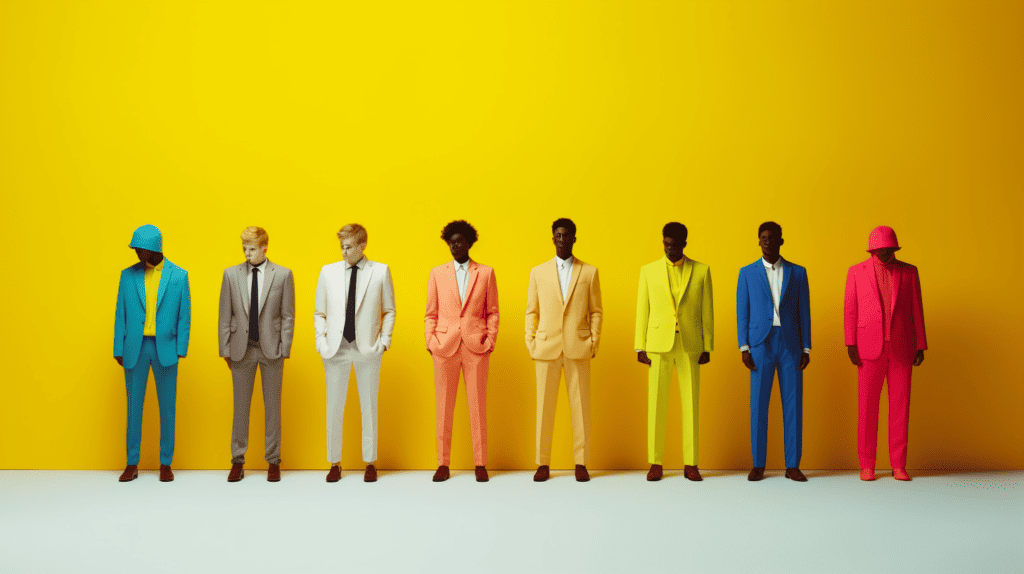
Addressing Ethical Considerations and Regulations
To ensure the responsible integration of AI into the music industry, it is essential to address ethical considerations and establish regulations. For instance, guidelines should be set to ensure that AI-generated compositions do not infringe on existing copyrights or that AI technology is not used maliciously to plagiarize or manipulate the work of others.
Additionally, as AI-generated music becomes more prevalent, it is crucial to develop clear standards for crediting the contributions of both human artists and AI algorithms to a given work. This will help to prevent legal disputes and foster a fair and transparent environment for all parties involved.
Ethical Considerations in AI-Generated Music
As AI-generated music becomes increasingly widespread, various ethical concerns emerge. Some of these concerns include the potential for AI-generated music to contribute to cultural appropriation, the dilution of traditional music styles, or the homogenization of music in general.
Cultural Appropriation
Cultural appropriation occurs when elements of one culture are adopted or used by members of another culture, often in a way that is disrespectful or exploitative.

AI-generated music, which often relies on large datasets of existing music, might inadvertently incorporate elements of various cultures without giving proper credit or understanding the cultural context. This can result in the misrepresentation or trivialization of the original culture and may lead to further marginalization of underrepresented communities.
Dilution of Traditional Music Styles
AI-generated music algorithms are often designed to identify popular patterns and trends within the music they analyze.
As a result, the output may lean heavily toward mainstream or widely-accepted styles, which can dilute traditional or less-popular music styles. Over time, this may result in a decline in the diversity of music genres and a loss of unique cultural expressions and heritage.
Homogenization of Music
The widespread use of AI-generated music could also contribute to the homogenization of music, as algorithms tend to create compositions based on patterns and trends found in existing data. This may result in technically proficient music lacking the distinctiveness and creativity found in human-generated compositions.
As AI-generated music becomes more prevalent, there is a risk that the rich tapestry of diverse musical styles and influences may be reduced to a more uniform, less imaginative landscape.
In conclusion, while AI-generated music offers exciting opportunities for innovation and new forms of creativity, addressing and considering the ethical implications of its widespread use is crucial. It is essential to develop ways to preserve cultural diversity and respect the heritage of various music styles while embracing the potential of AI in music creation.
Embracing the AI-Infused Future of Music
The increasing influence of AI in the music industry offers an exciting new frontier for creativity, collaboration, and innovation. By addressing the potential concerns and working together to create ethical guidelines and regulations, musicians, industry professionals, and AI developers can ensure that the integration of AI into the music landscape is both responsible and beneficial.
As we embrace this AI-infused future, we can look forward to new and innovative ways to create and enjoy music, while also remaining mindful of the potential pitfalls and challenges that come with any technological advancement. With the right approach, the future of music and AI has the potential to be a harmonious and groundbreaking partnership.
Despite these concerns, it’s undeniable that AI is revolutionizing the music industry in thrilling ways. It enables new forms of creativity and experimentation while also presenting unique challenges for artists and record labels alike. As we continue to navigate this new era of music creation, it will be fascinating to see how these unintended consequences evolve.
Podcast
Bridging the Gap: Harnessing the Power of Podcasts and Videos to Connect Communities with Vital Services

Podcasts and Videos in Community Services
Community support services are essential for helping those in need, but many individuals are unaware of the resources available to them. This is where podcasts and videos play a vital role as powerful tools for educating and engaging community members.
By creating audio and visual content that highlights the impact of community services, organizations can bridge the gap between service providers and the people they serve.
In this blog post, we will explore the various benefits of incorporating podcasts and videos into community services strategies and best practices for creating engaging content.
The Role of Podcasts and Videos in Strengthening Community Services
Podcasts and videos are a powerful way to communicate with community members and inform them of available services. Through audio and visual content, community service organizations can educate and engage their audience.
Podcasts and videos can help bridge the gap between community members and service providers, increasing accessibility and awareness of resources. Creating content that highlights the impact of community services can inspire others to get involved and support the cause.
Podcasts and videos can also provide a platform to share personal stories and experiences, helping to break down stigma and create a sense of community.
How Podcasts and Videos Can Help Improve Access to Community Resources
Podcasts and videos can provide a medium for sharing information about important community resources in an engaging and accessible way. This is particularly important for individuals who may not have access to traditional written materials or may have language barriers. Here are some ways in which podcasts and videos can improve the accessibility of community resources:
- Breaking down language barriers: Audio and visual content can help reach individuals who may speak a different language or have limited literacy skills. By providing information in a format that doesn’t rely on reading, podcasts and videos can help ensure that more members of the community are able to access important resources.
- Providing updates: Podcasts and videos can be used to provide updates on changes to community resources such as hours of operation, new programs, or changes to eligibility criteria.
- Encouraging action: Creating content that encourages community members to take action, such as accessing resources or volunteering, can help improve utilization of services. By highlighting the benefits of certain resources, podcasts and videos can help inspire individuals to take advantage of them.
- Showcasing impact: Podcasts and videos can showcase the impact of community resources through personal stories and testimonials, further highlighting their value. By sharing stories of those who have benefited from the resources, community service organizations can emphasize the importance of accessibility to community resources.
In short, podcasts and videos can play a crucial role in improving access to community resources by breaking down language barriers, providing updates, encouraging action, and showcasing impact.

Community service organizations should consider incorporating these mediums into their outreach efforts to help ensure that important resources are accessible to all members of the community.
The Benefits of Using Audio and Video Content in Community Outreach Programs
Using audio and visual content can have many benefits for community service organizations looking to reach a wider audience and strengthen their outreach efforts. Here are some of the key advantages:
- Engaging format: Audio and video content can be more engaging and memorable than written materials, helping to capture the attention of community members and inspire them to take action.
- Accessibility: Audio and visual content can help organizations reach individuals who may not have access to traditional written materials or who speak a different language.
- Personal connection: Incorporating personal stories and testimonials can help community members feel more connected to the cause and motivated to get involved.
- Establishing expertise: Creating regular content, such as a podcast or video series, can help organizations establish themselves as thought leaders in their field and build a following.
- Collaboration: Podcasts and videos can provide a platform for collaboration and partnerships with other organizations, further strengthening the impact of community outreach programs.
Overall, incorporating audio and video content into community outreach programs can help organizations better connect with their audience, improve access to important resources, and build a stronger, more engaged community.
Using Podcasts and Videos to Enhance Volunteer Recruitment in Community Services
Volunteers are a crucial part of any community service organization. However, finding and recruiting volunteers can be a challenge. Podcasts and videos can be an effective way to enhance volunteer recruitment efforts.
Creating Content that Highlights the Impact of Volunteer Work
One of the most powerful ways to inspire people to volunteer is by showcasing the impact that their work can have. Creating content that tells the stories of volunteers and the impact they’ve had can be a powerful recruitment tool.
Consider producing videos or podcasts that feature interviews with volunteers, sharing their experiences and the change they are making in their communities. Highlighting impactful volunteer projects that have made a difference in the community can also be a great way to draw attention to volunteer opportunities.
Providing Information on Volunteer Opportunities
Podcasts and videos can also be used to provide information about volunteer opportunities. Creating a series of short videos or podcast episodes that highlight different volunteer roles and the skills needed to excel in them can be a great way to engage potential volunteers.
It can also be helpful to include information on the benefits of volunteering, such as gaining new skills, meeting new people, and making a positive impact in the community. By sharing this information in an engaging and accessible format, community service organizations can attract more volunteers and build a strong team of supporters.
Using Storytelling to Encourage Volunteer Action
Storytelling can be a powerful tool for encouraging people to take action. By sharing stories of the impact that volunteers have had in the community, organizations can inspire others to get involved.
Consider using video or audio content to showcase the experiences of volunteers and highlight the difference they have made. Encouraging existing volunteers to share their stories and experiences can also be an effective way to generate interest in volunteering and attract new supporters.
By incorporating podcasts and videos into their outreach strategies, community service organizations can enhance volunteer recruitment efforts and attract more supporters. Whether through highlighting the impact of volunteer work, providing information on volunteer opportunities, or using storytelling to encourage volunteer action, audio and visual content can be a powerful way to engage and inspire others to get involved in their communities.
Creating Engaging Video and Audio Content for Community Service Organizations
When it comes to creating content for community service organizations, it’s important to consider the audience and their preferences for consuming information. Here are some tips for creating engaging video and audio content:
- Incorporate personal stories and testimonials: By sharing personal stories of how the organization has made a difference in people’s lives, you can make the content more relatable and engaging for viewers and listeners. Testimonials can also help build credibility for the organization.
- Use visual aids: Visual aids, such as infographics, images, or animations, can help simplify complex information and make it more accessible. Consider using visual aids to break up the content and emphasize important points.
- Create a consistent style and format: Creating a consistent style and format can help build a recognizable brand and increase engagement with regular viewers and listeners. Consider using the same intro and outro music, or using the same colors and fonts throughout your content.
- Experiment with different types of content: To keep your audience engaged, consider experimenting with different types of content, such as short videos, interviews, or animations. By mixing up the format, you can keep your content fresh and interesting.
By following these tips, you can create engaging video and audio content that will help your organization connect with your audience and increase awareness of your services.
Best Practices for Incorporating Podcasts and Videos into your Community Services Strategy
Identify clear goals and objectives
Before incorporating podcasts and videos into your community services strategy, it’s important to identify clear goals and objectives. Consider what you hope to achieve through this type of content and the audience you want to reach. This will help guide your content creation and ensure that your efforts are aligned with your overall strategy.
Invest in high quality equipment and editing software
Investing in high quality equipment and editing software is essential to ensure that your content is professional and engaging. This doesn’t mean that you have to break the bank, but it’s important to have equipment that can produce high quality audio and video content.
Designate a team or individual responsible for content creation
To ensure that your content is published on a consistent basis, designate a team or individual responsible for content creation. This person should have experience with audio and video production, as well as a strong understanding of your organization’s mission and goals.
Engage with the audience through social media and other channels
Engaging with your audience through social media and other channels is key to building a following and encouraging feedback and participation. Monitor comments and respond to questions or concerns promptly to create a sense of community and encourage ongoing engagement.
Measure impact through metrics
Finally, measure the impact of your podcasts and videos through metrics such as downloads, views, and engagement to continuously improve and refine your strategy. This will help you identify what’s working and what’s not, and make data-driven decisions on how to improve your content and reach your goals.
Note: Remember to always prioritize the needs and preferences of your audience when creating content for your community services strategy. By understanding what they want and need, you can create content that resonates with them and helps build a stronger connection between your organization and the community.
Conclusion
In conclusion, podcasts and videos can be powerful tools for community service organizations to communicate with their audience and share important information about available resources. By creating engaging and informative content, these organizations can reach a wider audience and inspire individuals to get involved and support their cause. Incorporating personal stories, testimonials, and visual aids can help create a sense of community and build brand recognition.
Best practices include identifying clear goals, investing in quality equipment and software, designating a team or individual for content creation, engaging with the audience, and measuring impact for continuous improvement.
Using podcasts and videos, community service organizations can strengthen their outreach efforts and make a meaningful impact on their community.
-

 Vetted2 months ago
Vetted2 months ago11 Best Gore Websites to Explore the Darker Side of the Internet
-

 Music Theory2 weeks ago
Music Theory2 weeks agoUnlocking Nature’s Harmony: The Power of 432 Hz Frequency in Sound & Music for Enhanced Living and Well-Being
-

 Vetted1 month ago
Vetted1 month ago15 Best Commercial Vacuum Cleaners for Heavy-Duty Cleaning Jobs
-

 Vetted2 months ago
Vetted2 months ago15 Best Essential Oils Brands to Elevate Your Aromatherapy Experience
-

 Sound Design2 weeks ago
Sound Design2 weeks agoWhat Is the Difference Between a Sound Engineer and A Sound Designer?
-

 Native Instruments Kontakt2 weeks ago
Native Instruments Kontakt2 weeks agoVOCAL AI – Animated Intelligence: The Ultimate Vocal Playground
-

 Sound Design2 weeks ago
Sound Design2 weeks agoWhy Sound Engineer
-

 Vetted2 months ago
Vetted2 months ago15 Best Concrete Sealers for Ultimate Protection and Longevity








